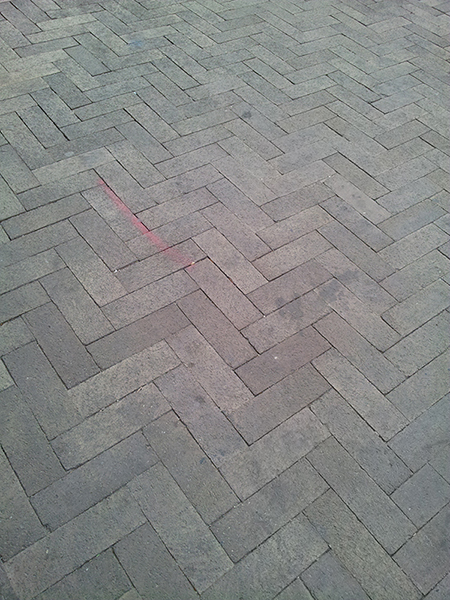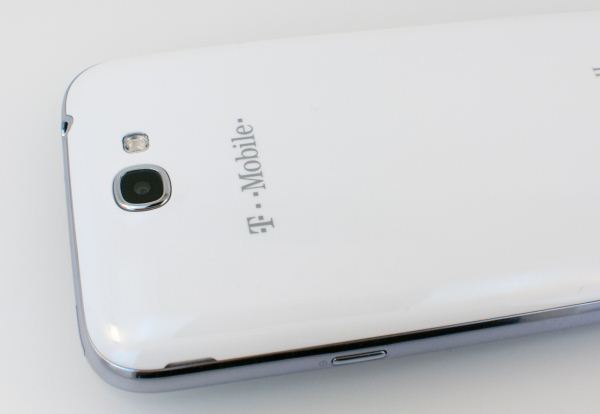Samsung Galaxy Note 2 Review (T-Mobile) - The Phablet Returns
by Brian Klug on October 24, 2012 9:00 AM ESTThe Galaxy Note 2 is very much an enlarged, slightly tweaked Galaxy S 3, and nowhere is this more evident than the camera system. In fact, after lots of digging I’ve determined that almost all of this is exactly the same as the Galaxy S 3, which isn’t a surprise at all. Samsung has tweaked the camera UI and added features, and compared to the Note there’s definitely a marked improvements, but for Galaxy S 3 users the experience is entirely the same.
To start, the Galaxy Note 2 uses the same 8 MP S5C73M3 CMOS as Galaxy S 3 on the rear facing camera, which is a CMOS which on paper has specs up to par with the competition. There's no official disclosure about this part, but people still know about the specs. Optical format is 1/3.2" which is very common right now, 1.4µm square pixels, and of course the sensor is backside illuminated. From what I can tell the optical system on top of that is exactly the same as well, F/2.6 with a focal length of 3.7 mm. From what I’ve seen of the Galaxy Note 2 camera, performance is as expected basically the same as Galaxy S 3.
Likewise the front facing CMOS is a S5K6A3, also same as Galaxy S 3, which is 1/6" format with 1.75µm BSI pixels and a total size of 1412 x 1412 pixels. Captured images end up being 1280 x 960, F/2.8 with focal length of 2.5 mm.
.gif)
Milbeaut ISP Roadmap
In addition, Samsung continues to use a discrete Fujitsu Milbeaut 5th generation ISP (Image Signal Processor) for their cameras, you see references to this as M5MO throughout. This is the same setup as I saw on the Galaxy S 2, and though I didn’t dig into the original Note I bet it’s there too since that camera was analogous. There wasn’t much of a jump in camera performance between the Galaxy S 2 and 3, it seems as though Samsung is largely content keeping things the way they are this generation, perhaps waiting for the next generation of the Milbeaut ISP or a dramatically different CMOS to come around from Samsung Semiconductor before they mix things up. Meanwhile F/2.6 isn’t the most aggressive target for a fast optical system, considering other players are at F/2.0. I think Samsung expects those interested in a smartphone with emphasis on camera to go after the Galaxy Camera or something.
 This sign just comes off sounding so sarcastic (sample Galaxy Note 2 Photo)
This sign just comes off sounding so sarcastic (sample Galaxy Note 2 Photo)
To evaluate still image quality we turned to our standard set of tests which seems to keep growing. That consists of a scene in a lightbox with constant controlled illumination of 1000 lux taken using the front and rear cameras with as close to the same field of view as possible, images of a distortion grid, GretagMacbeth ColorChecker card for white balance checking, and an ISO12233 test chart for gauging spatial resolution in an even more controlled manner. Because I’ve moved houses and lighting will never ever be exactly the same, I have decided to move the three test charts into my lightbox as opposed to putting them on a wall and illuminating them with studio lights. This warrants a completely new set of comparison images, hence the smartphone 2012 camera bench for the three charts and front facing camera.
There’s a lot to go through here, but the test charts tell the most objective story. To me, flipping back an forth between Galaxy S 3 and the Samsung Galaxy Note 2 confirms what I already know, that performance is very similar between the two because they’re basically the same system. Locations 3–7 remain in the bench photo locations, and unfortunately due to time constraints I could only get photos on the one day I was in town with some overcast skies and not the usual lighting I like.
Honestly probably the biggest improvement over the original Note is that the center purple colored spot is completely gone as you can see with the following toggle.

Samsung’s camera UI continues to be very comprehensive and offer a wealth of options and shooting modes. I spent a lot of time playing around with HDR, which now has a Normal and Strong mode that adds even more dynamic range with exposures bracketed even further from the center. There are a couple of those in the MISC gallery of camera shots.

































































131 Comments
View All Comments
Zoomer - Wednesday, October 24, 2012 - link
Google play music actually seems to do burst caching.Peanutsrevenge - Wednesday, October 24, 2012 - link
Agreed.I listen to the cricket on tunein radio when it's on and that's a constant stream I believe and it annihilates my battery, despite the low bitrate.
Would be nice if somewhere along the line radios could go into a low power mode where it's only running close to the minimum required speed with the power taking a relative drop.
tommo123 - Wednesday, October 24, 2012 - link
and haven't got the thing below 30% in battery life yet, even after using bluetooth audio for a few hours and tracking my location with endomondo, watching movies via 3G (didn't go for the LTE ver here - no point) and so on.got my USB OTG adapter today and am seeing how long i can play movies off of it for. max brightness and playing off an SD card connected externally.
the screen on this thing is amazing and now my SGS2 is tiny, like a kids toy.
tommo123 - Wednesday, October 24, 2012 - link
well video playback laster 8 hours 19 mins with screen on max brightness, with wifi on and powering a usb OTG cable, a sd card/usb adapter and the SD card itself. now on 5%not too shabby.
in airplane mode etc and an internal mSD card i think it could hit the 10 hours mark - especially with brightness lowered a tad
Spunjji - Wednesday, October 24, 2012 - link
Pretty much fits my experience! Fairly sure there are even gains to be had from rooting, tweaking etc.tommo123 - Wednesday, October 24, 2012 - link
oh i rooted mine on the 2nd day and flashed a rom on the 3rd :)PeteH - Thursday, October 25, 2012 - link
So maybe not the best example of a "typical" user's experience ;)tommo123 - Friday, October 26, 2012 - link
nope :)i did my own test yest though
i let 720p vids play non stop yest on this in airplane mode, max brightness (like i was on a plane) and was impressed! played for 11 hours 38 mins before it hit 5%. so say 12 hours video playback.
nice.no need for a laptop to play vids on a flight anymore. just this and a spare battery for when i get off the plane :)
plus 1 for removable batteries! :D
Peanutsrevenge - Wednesday, October 24, 2012 - link
No point in LTE?You may regret that soon, 4G's rolling out as we speak.
Was in T-mo store the other day helping mate choose a phone (got S3 i9305, could convince him to get note II) and sales advisor reckons 6 months for Bournemouth.
Spunjji - Thursday, October 25, 2012 - link
This one does vary a lot by where you live. Their definition of "coverage" might be interesting too, given how their standard network holds up.